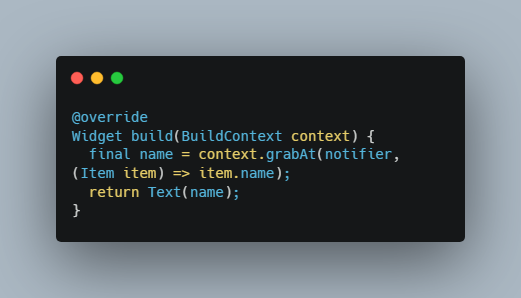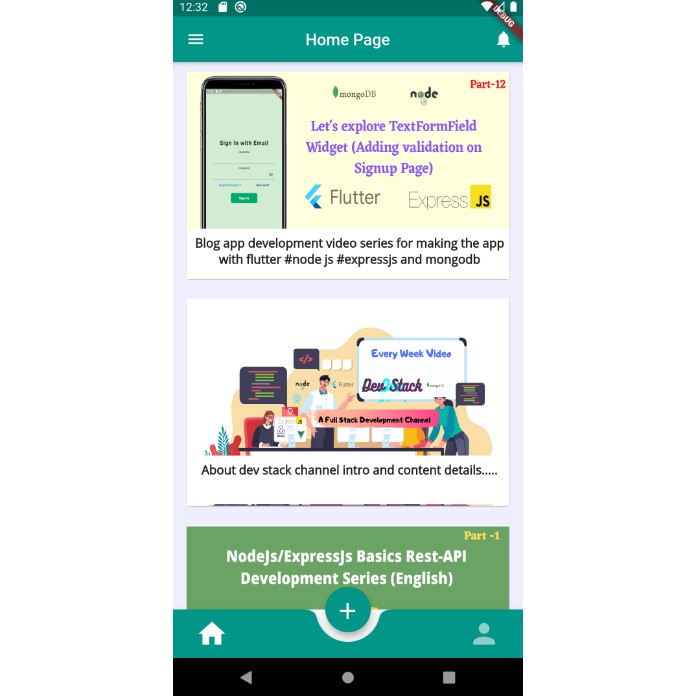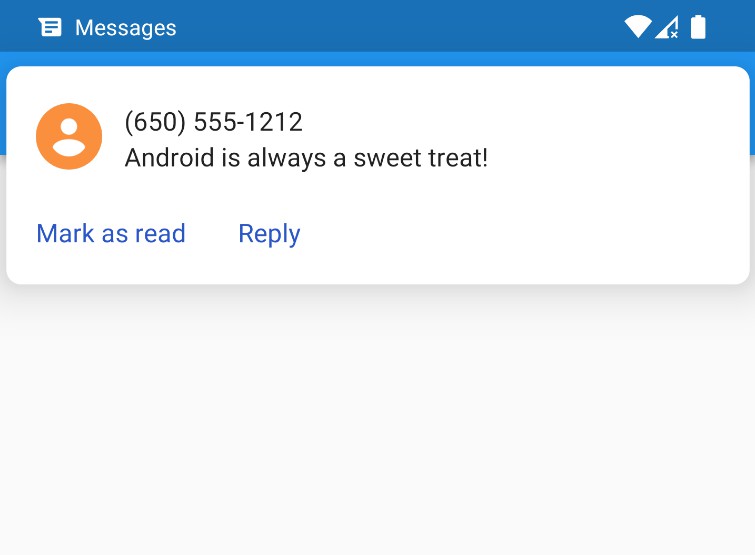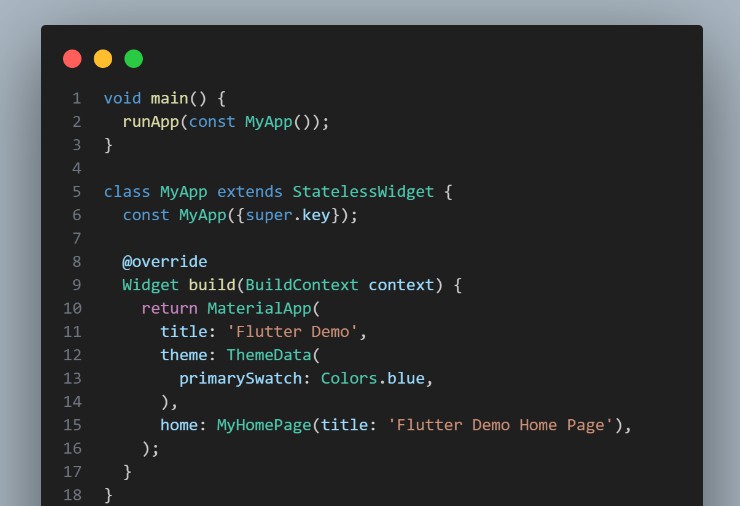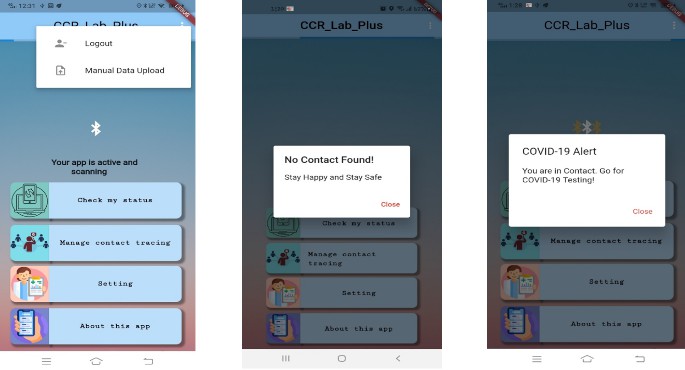A flutter package to control rebuilds of a widget based on updates of a Listenable.
What is Grab?
Grab is similar to ValueListenablebuiler or AnimatedBuilder, but not a widget like them.
It comes with mixins and extensions of BuildContext.
If a Grab mixin is added to a widget and an extension method grab() or grabAt() is
used inside it with some Listenable passed in, the widget is rebuilt whenever the Listenable
(or only specific part of it) is updated.
Good for state management
What this package does is only rebuild a widget according to changes in a Listenable. Despite such simplicity, it becomes a powerful state management tool if combined with some DI package like get_it.
Grab works as long as a Listenable is available in any way when grab() or grabAt()
is used, so you can use your favourite DI package to pass a Listenable around.
Motivation
The blog post below really inspired the author of this package. It shows a picture of how simple state management could be.
Combining this idea, some sort of DI and Grab, you can focus on creating a good app with no trouble understanding how to use it. This is an advantage over other packages with a larger API surface.
Supported Listenables
The Listenable can be anything that inherits a Listenable; ChangeNotifier, ValueNotifier, TextEditingController, Animation / AnimationController, ScrollController, etc.
Usage
Mixins
Add StatelessGrabMixin or StatefulGrabMixin to a widget in which you want to use extensions.
class MyWidget extends StatelessWidget with StatelessGrabMixin
class MyWidget extends StatefulWidget with StatefulGrabMixin
Each mixin has an alias.
Use Grab for StatelessGrabMixin or Grabful for StatefulGrabMixin if you
like shorter names.
class MyWidget extends StatelessWidget with Grab
class MyWidget extends StatefulWidget with Grabful
Extensions
You can use grab() and grabAt() on a BuildContext.
They are like watch() and select() of provider.
Make sure to add a mixin to the StatelessWidget/StatefulWidget where these extensions are used. An error occurs otherwise.
grab()
grab() listens to the Listenable passed to it, and the widget that the BuildContext
belongs to is rebuilt every time the Listenable is updated.
final notifier = ValueNotifier(0);
@override
Widget build(BuildContext context) {
final count = context.grab<int>(counterNotifier);
return Text('$count');
}
The return value is the Listenable itself, or its value if the Listenable is ValueListenable.
In the above example, the Listenable is a ValueNotifier extending ValueListenable, so
the count returned by grab() is not the Listenable itself but the value of ValueNotifier.
grabAt()
The widget is rebuilt only when there is a change in the value returned by the selector, which is a callback function passed as the second argument.
final notifier = ValueNotifier(
Item(name: 'Milk', quantity: 3),
);
@override
Widget build(BuildContext context) {
final name = context.grabAt(notifier, (Item item) => item.name);
return Text(name);
}
The selector receives the Listenable itself, or its value if the Listenable is ValueListenable.
In this example, the value of the notifier is Item that has name and quantity.
The widget is not rebuilt if quantity has a new value but name is not updated.
Tip
The value returned by the selector can be anything as long as it is possible to evaluate
its equality with the previous value with the == operator.
final bool isEnough = context.grabAt(
notifier,
(Item item) => item.quantity > 5,
);
Supposing that the quantity was 3 in the previous build, if it’s changed to 2, the widget is
not going to be rebuilt because isEnough remains false.
